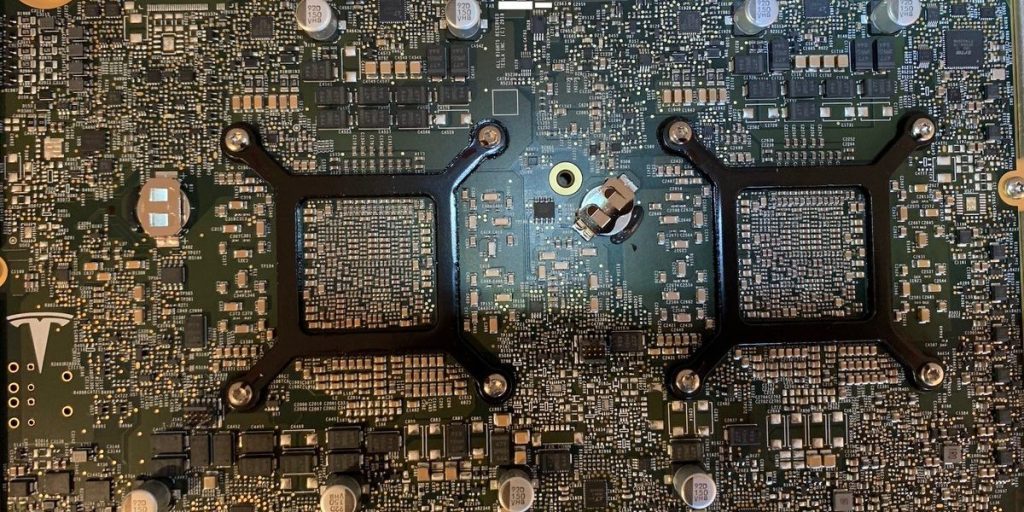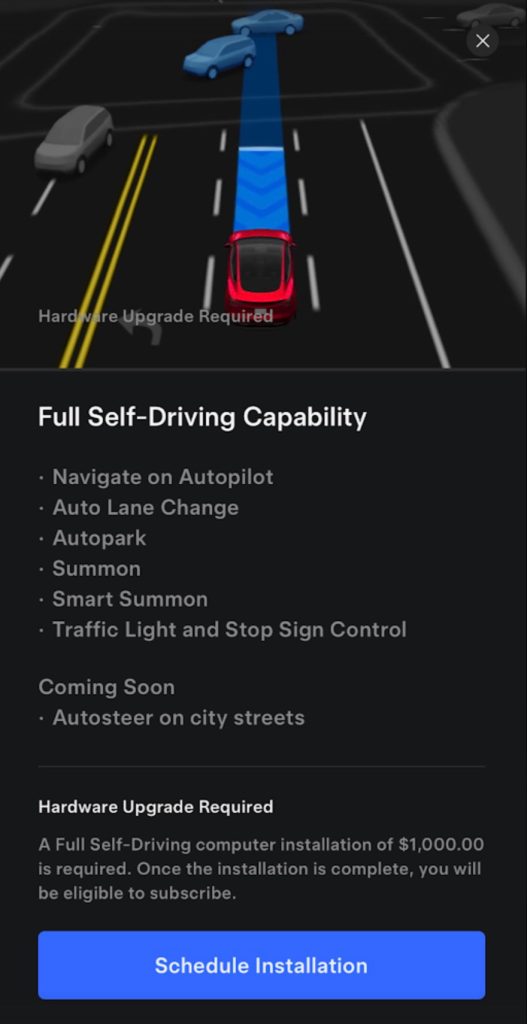
The walls are closing on Tesla’s claim that millions of its vehicles with Hardware 3 (HW3) computers will be capable of unsupervised self-driving.
Tesla needs to come clean before the word “fraud” comes out.
Making a mistake is not a fraud. If Tesla really thought that it could deliver unsupervised self-driving to vehicles equipped with HW3 and, at one point, it figured out that it couldn’t, it’s not fraud even though it used that as a selling point for millions of vehicles for years.
However, the moment Tesla figures out that it can’t, it needs to stop selling its Full Self-Driving package to HW3 vehicle owners and come clean to owners about what their vehicle will and will not be able to do, like a robotaxi service.
Has the moment come?
Delivering self-driving on Tesla HW3/self-driving computer
In 2016, Elon Musk announced that all future Tesla vehicles would come equipped with the necessary hardware for self-driving capabilities, even specifying “level 5 self-driving,” which implies the ability to operate autonomously under any conditions. However, shortly after, Musk acknowledged that Tesla might require more onboard computing power than initially thought, leading to the introduction of Hardware 3 (HW3), which Tesla also called its “self-driving computer”.
Musk assured that HW3 would enable full self-driving (FSD) capabilities, promising retrofits for earlier models that had purchased the FSD package. When I bought my own Tesla Model 3 in 2018, it was equipped with the original computer, but since I had purchased the FSD package, Tesla upgraded my car with the new “self-driving computer” in 2019.
Following this, Tesla introduced Hardware 4 (HW4), a more advanced onboard computer system, but did not offer retrofits for older models with HW3, maintaining that HW3 was sufficient for achieving self-driving through software updates.
Musk said that it wouldn’t be “economically feasible” to retrofit HW3 vehicles with HW4, which not only includes a more powerful computer but also better cameras.
Initially, Musk claimed that FSD improvements would first be optimized for HW3, suggesting that HW4 might lag behind by at least “six months”. However, Tesla reversed this approach with the release of FSD version 12.5, which was first deployed to HW4 vehicles. Musk explained that optimizing the software for the less powerful HW3 would take additional time.
This has raised a significant red flag hinting at the limitations of HW3 in handling the latest software advancements towards unsupervised self-driving, a capability Tesla promised to HW3 owners since 2016.
The concern is especially significant within the context that Tesla still has a lot of work to do to deliver its unsupervised self-driving capabilities.
Tesla has always gone out of its way not to release any data regarding its FSD program. Therefore, we have to rely on crowdsourced data, which shows Tesla is currently at about 122 miles between critical disengagement:

According to most experts, Tesla needs a ~1,000x increase in miles between disengagement to deliver on its unsupervised self-driving promises. As you can see, this data shows that Tesla achieved a ~2x improvement over the last 3 years.
On top of this situation, CEO Elon Musk got people even more worried during the launch of the Robotaxi last week.
While discussing his claim that “all Tesla vehicles will be capable of self-driving,” someone in the crowd asked him about the Cybertruck, which Musk quickly answered with a “yes.”
However, when someone asked him about HW3 vehicles, instead of simply responding “yes”, Musk said “Let’s not get nuanced here” and then quickly asked for the next slide:
Now, still at the Robotaxi event last week, some have been pointing to this interaction with Tesla executives Franz von Holzhausen and Lars Moravy saying again that robotaxi-level self-driving is coming to “all cars” after being asked more specifically about HW3 as evidence that Tesla believes it’s still possible to deliver FSD unsupervised on HW3:
With all due respect to von Holzhausen and Moravy, they wouldn’t be the best people to ask. The former is in charge of design and the latter of vehicle engineering, which you would think the FSD program would fall under, but no.
Ashok Elluswamy leads the program at Tesla and reports directly to CEO Elon Musk.
That’s evidenced by some mistakes made even in this short interaction like Moravy saying that Tesla announced its self-driving effort in 2014 when it was in 2016 and him asking if a 2018 Model 3 has HW4, which has never been available on early Model 3 vehicles.
Speaking of the Robotaxi event, Musk said that the new Robotaxi is equipped with a new hardware suite, especially a new on board computer called AI5. He didn’t elaborate on the capacity of the new computer. The vehicle also has a bumper camera, which only the Cybertruck has and no other Tesla vehicle on the road today. The onboard compute power is one thing, but it’s also not the only potential bottleneck for Tesla with older hardware.
Another important piece of evidence pointing to Tesla not being able to deliver unsupervised self-driving on HW3 vehicles is the fact that it doesn’t have any compute redundancy anymore.
Electrek spoke with a well-known Tesla hacker called ‘green‘ who often reveals information about Tesla through his deep dives into the automaker’s software. He actually released the first HW3 images back in 2019.

Green reports that starting in late 2023, Tesla started to use both nodes for its FSD program on HW3 – running some new neural nets on the extra node. Originally, the idea was to have one for redundancy, which is necessary for higher levels of autonomy like levels 4 and 5, but arguably also level 3.
Now, green says that if one of the nodes fails, FSD doesn’t drive anymore. It can still produce FSD visualizations, but that’s about it. That alone basically kisses goodbye to robotaxi-level self-driving on HW3.
It’s also worth noting that shortly after green noticed this change happened, Tesla started to shift its priority from releasing new software on HW4 first rather than HW3.
Tesla is reducing its liability
Tesla has been trying to actively reduce its legal liability regarding HW3 by encouraging people who bought FSD to upgrade to newer vehicles.
For years Tesla owners have been asking Tesla to allow them to freely transfer their FSD package to a new vehicle. It makes sense. Tesla hasn’t delivered the product they have paid for. It’s the bare minimum to allow them to transfer it to a new car.
After years of refusing, Musk eventually agreed to FSD transfer last year, but he called it a “one-time amnesty” and said to take advantage of it now because it won’t be offered again.
That turned out not to be true. Tesla brought back the FSD transfer twice more since – with last quarter Musk saying “one more time”. And then, sure enough, Tesla brought it back for a fourth time this quarter.
This fake incentive to upgrade your older car with FSD to a newer one now because it’s the “last time” has a positive effect on Tesla’s liability regarding HW3.
When Tesla resales those used HW3 vehicles with FSD, they use their new language called “(Supervised) Full Self-Driving”, which opens the door for Tesla to say that they are only selling you self-driving that needs to be “supervised” by a driver.
But interestingly, for HW2 vehicle owners who never purchased FSD, Tesla is still selling them a $1,000 HW3 computer upgrade and $2,000 FSD software package ($2,000 if you have Enhanced Autopilot) with still the old language in the upgrade page:


That’s where Tesla would be adding liability as it would be “upgrading” a car to a 5-year-old computer that is already lagging behind on updates to its newer 2-year-old computer (HW4).
Electrek’s Take
Let’s be honest. Tech is rarely supported with software updates after 5-7 years. Tesla Hardware 3 is entering that zone. It is becoming obsolete and normally, it wouldn’t be a problem, but Tesla sold a Full Self-Driving capability package for up to $15,000 based on this hardware that it never delivered.
At the minimum, it will have to reimburse that, but owners can even argue that they bought the car because Elon Musk told them it would become self-driving over time and become an “appreciating asset.”
This could quickly become a very large liability for Tesla, and the way it handles it is also important.
Musk said that retrofits are not economically feasible from HW3 to HW4. It’s true that it would be quite expensive and also likely create an insurmountable amount of work for Tesla’s already overworked service teams. The HW4 computer doesn’t have the same power harness or camera harnesses as the HW3, and it doesn’t share a form factor that fits in the exact same spot.
Also, the cameras have been upgraded with HW4, which raises the question, “Is the computing power the only problem, or does the camera also need to improve?”
If it’s just the computing power, Tesla could potentially design a new computer that could be more easily retrofitted in HW3 cars, but even then, that’s something that needs to be disclosed.
As I said, if Tesla knows that it can’t deliver unsupervised self-driving on HW3, it needs to let owners know right now and stop selling the software package to HW3 owners without a clear plan to make things right. Otherwise, this quickly becomes fraudulent.
The fact that Elon and Tesla have been wrong so many times about self-driving is already not a great confidence builder for them delivering on HW4 vehicles or even on the new AI5 (Robotaxi), but if they are also actively misleading owners, then Tesla becomes untrustworthy.
I am seriously concerned that Tesla is going to rely on the “corporate puffery” defense to frame Elon’s promises as “mere puff”.
Top comment by Joe cohen
All of us have the same story. We bought a Tesla and added the very expensive option FSD. We did so because of Tesla marketing and Mr Musks promises that our cars will be able to drive themselves in very short order.
They don’t.
This never happened nor will it happen anytime soon. So now what? I feel I deserve a substantial refund. How does anyone else feel?
After I first brought up the potential of Tesla reaching the limits of HW3 earlier this year, many Elon superfans started to make claims that Tesla and Elon never promised robotaxi-level self-driving capabilities on HW3 cars, which is plain ridiculous.
Tesla could also blame regulators as this is the new language that you have to agree with when buying what is now called “Full Self-Driving (Supervised)”:
The currently enabled Autopilot and Full Self-Driving (Supervised) features require active driver supervision and do not make the vehicle autonomous. Full autonomy will be dependent on achieving reliability far in excess of human drivers as demonstrated by billions of miles of experience, as well as regulatory approval, which may take longer in some jurisdictions. As Tesla’s Autopilot and Full Self-Driving (Supervised) features evolve, your vehicle will be continuously upgraded through over-the-air software updates.
On the very same day that Tesla presented its new Robotaxi, Former President Donald Trump, who Tesla CEO Elon Musk is financially backing to become the next president and who he says he is “all-in” on, said that he would “ban autonomous vehicles on American roads.”
This situation is quite a mess to say the least.
FTC: We use income earning auto affiliate links. More.






Comments